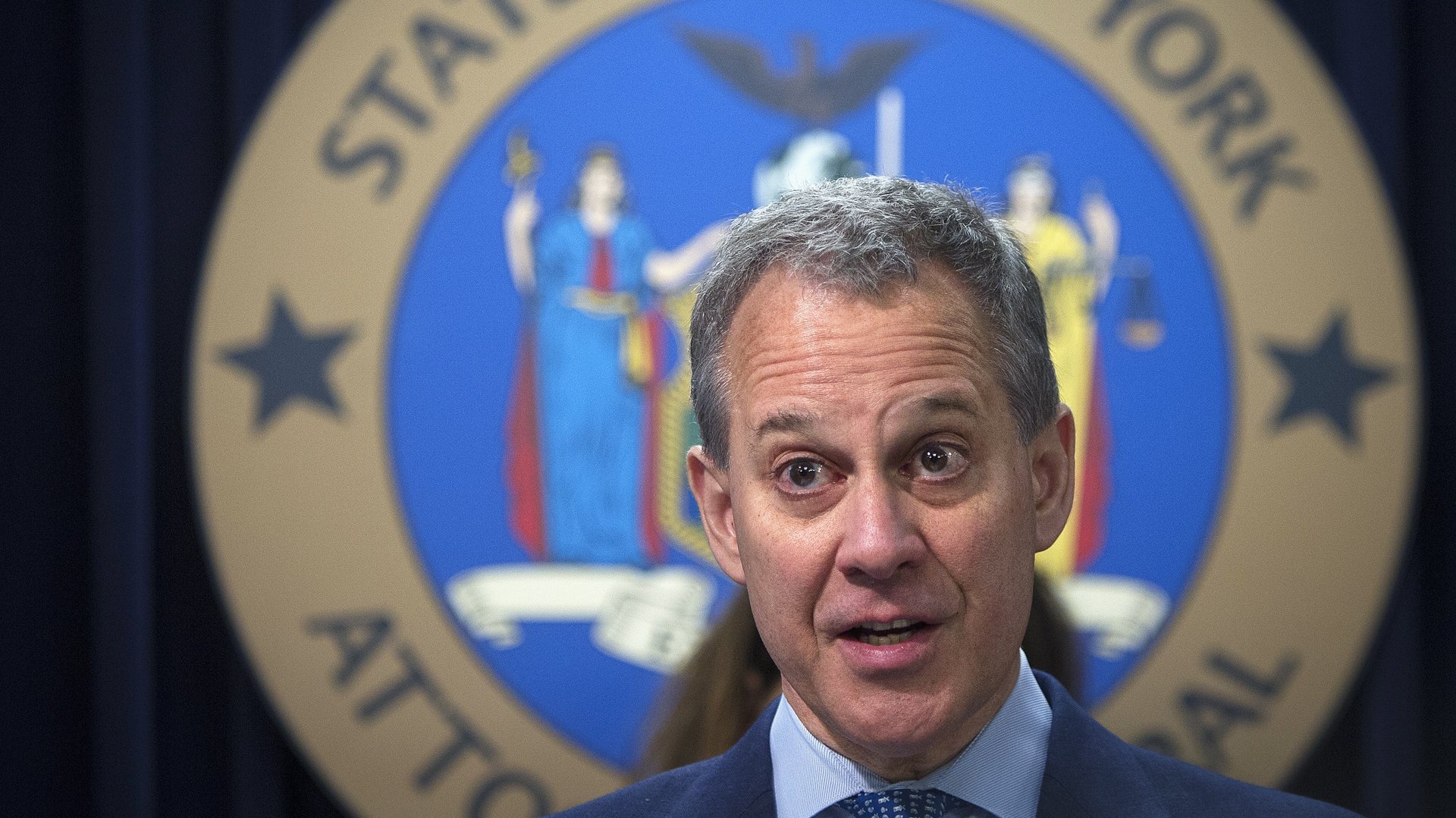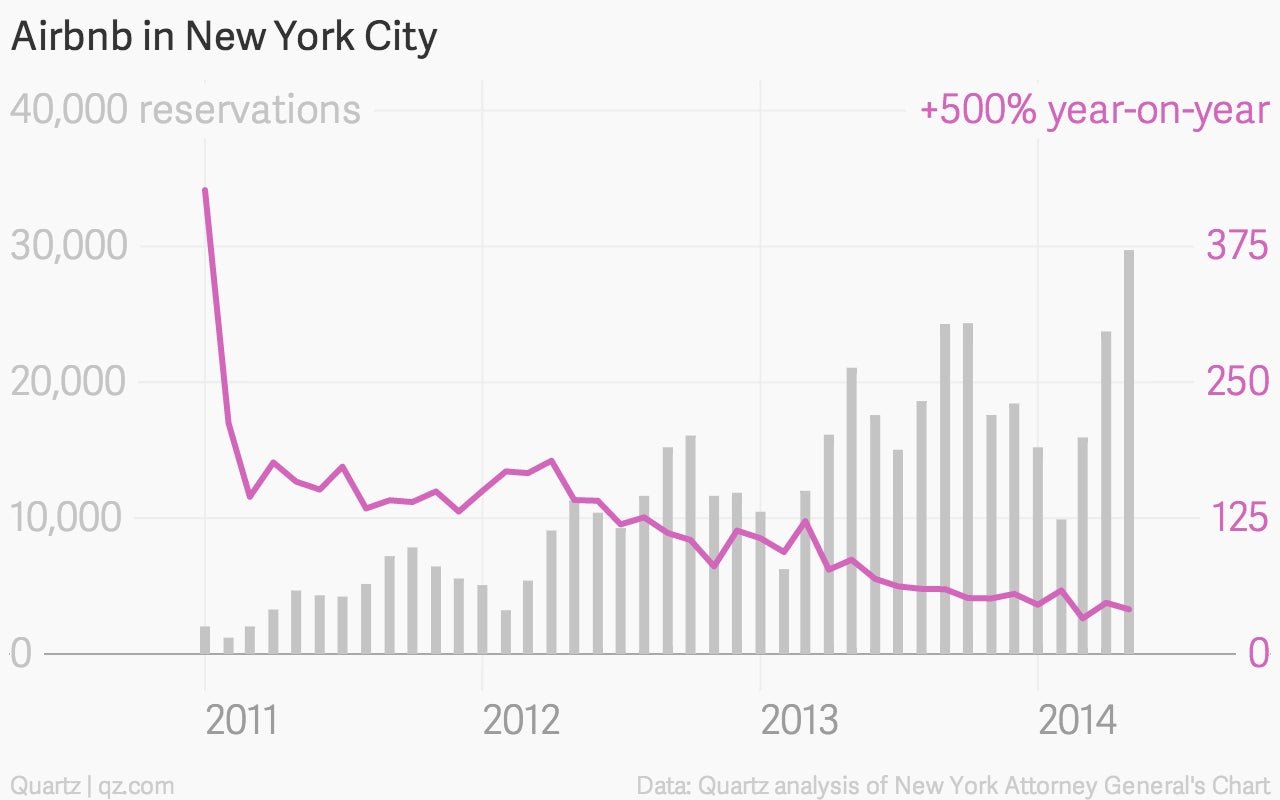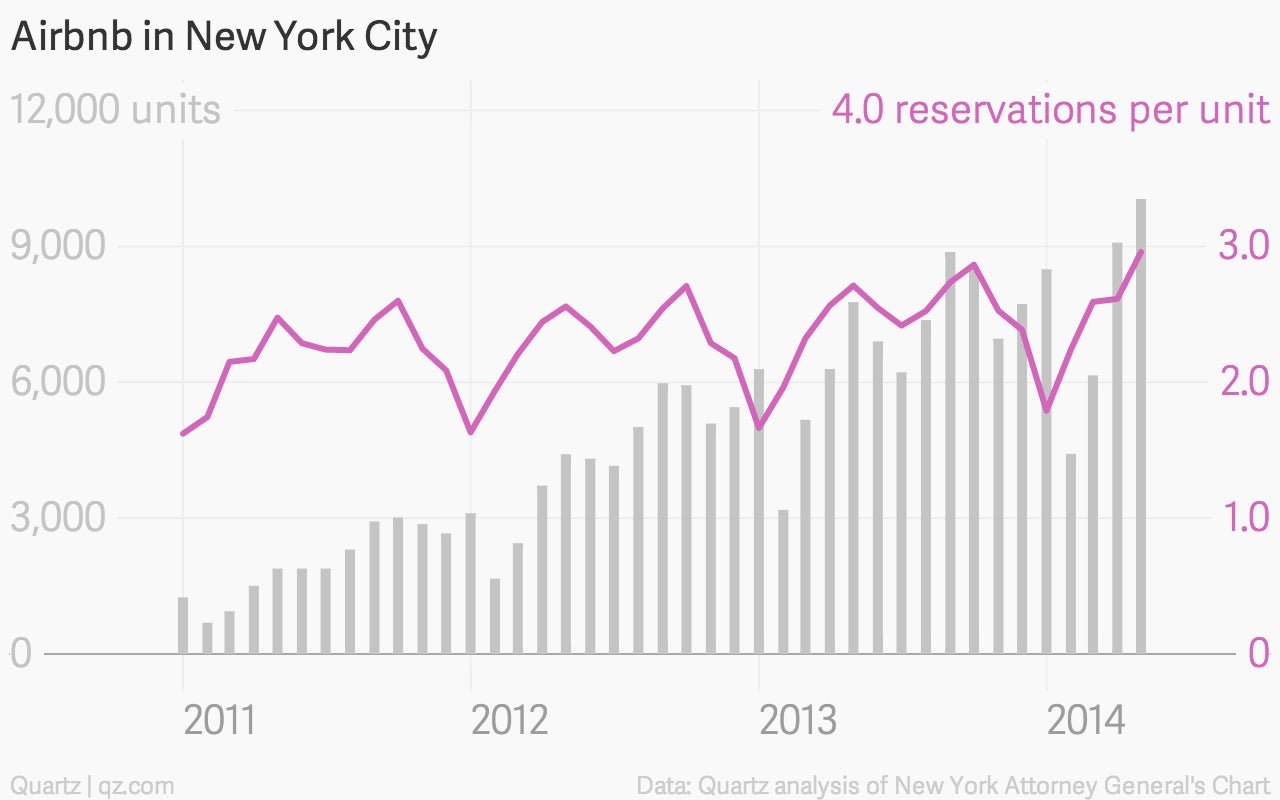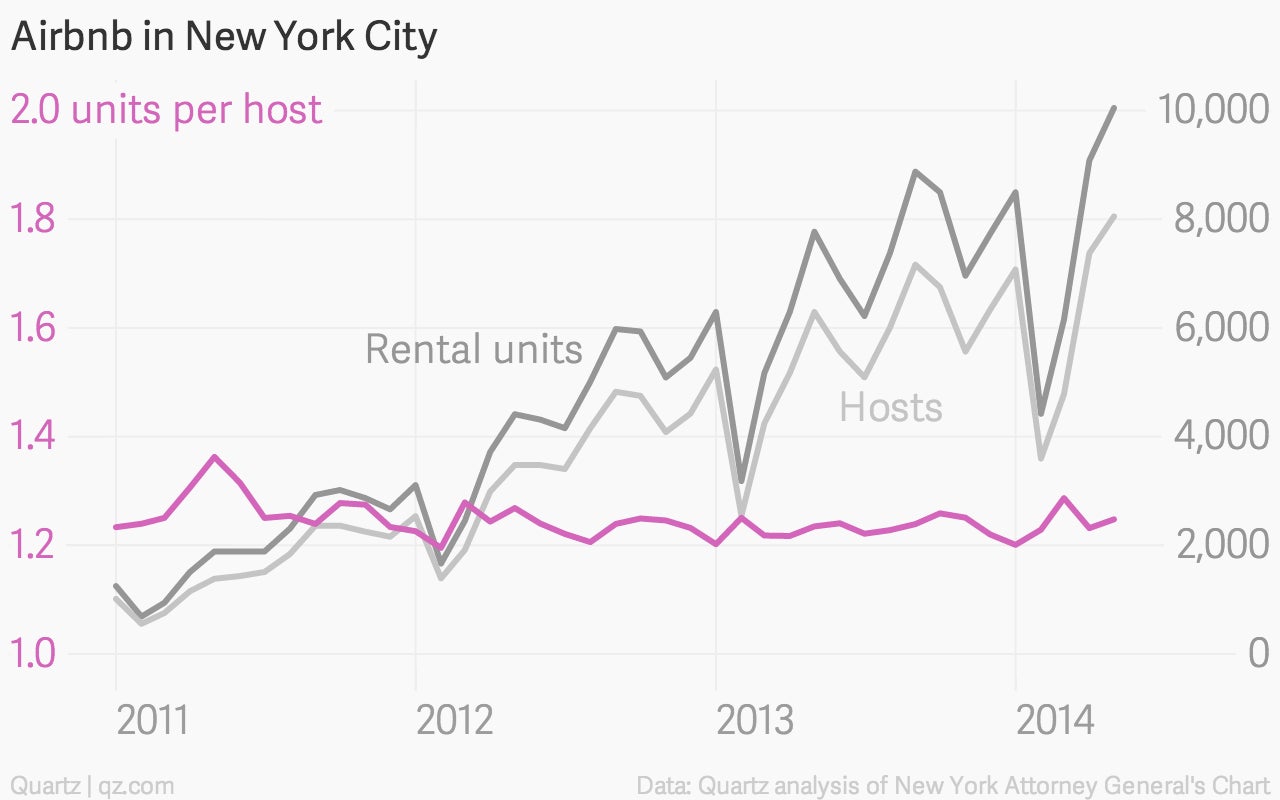3 things we learned from Airbnb’s proprietary data
New York Attorney General Eric Schneiderman released a report today on Airbnb’s activities in New York City, in it were charts, graphs, and maps showing many aspects of Airbnb’s operation in the city. Schneiderman claims that most units listed on Airbnb are done so illegally with respect to both New York State and New York City laws regarding hotels, hostels, and other for-profit accommodation. He used Airbnb’s own data—obtained after he subpoenaed the company—to make his case.


New York Attorney General Eric Schneiderman released a report today on Airbnb’s activities in New York City, in it were charts, graphs, and maps showing many aspects of Airbnb’s operation in the city. Schneiderman claims that most units listed on Airbnb are done so illegally with respect to both New York State and New York City laws regarding hotels, hostels, and other for-profit accommodation. He used Airbnb’s own data—obtained after he subpoenaed the company—to make his case.
The previously private, proprietary data, used to make the report will not be released, but Quartz was able to reverse-engineer one of the charts to extract some of the underlying information. Here’s what we learned:
Reservation growth is slowing

Like any business, maintaining high growth rates is impossible to maintain because of the law of large numbers. Airbnb’s year-on-year growth in reservations was around 40% in in May down from around 50% at the end of 2013 and far from the triple-digit growth of 2011 and 2010. Nonetheless, 40% annual growth is impressive on its own.
More units are getting more use faster

Airbnb units in New York City had three reservations on average in May 2014. The number of reservations per unit have steadily increased since 2011, albeit with seasonal dips in the winter. In 2013, the average revenue per unit for New York City was $36,868 according to the report.
Most hosts only have one unit

In New York City Airbnb has had a near-constant 1.2 units per host for the last three years. Schneiderman’s report shows some hosts have hundreds of units, but it also noted that just 6% of hosts had more than two units. This means the vast majority of them only rent one unit. (The report did not reveal findings on how many of the units were host’s primary residences, but it noted that 65% of units were rented out for at least 90 days in 2013)
With the release of the report Airbnb spokesman Nick Papas has noted that more than 2,000 units have been removed from the site’s listings since they turned over this data to the attorney general.